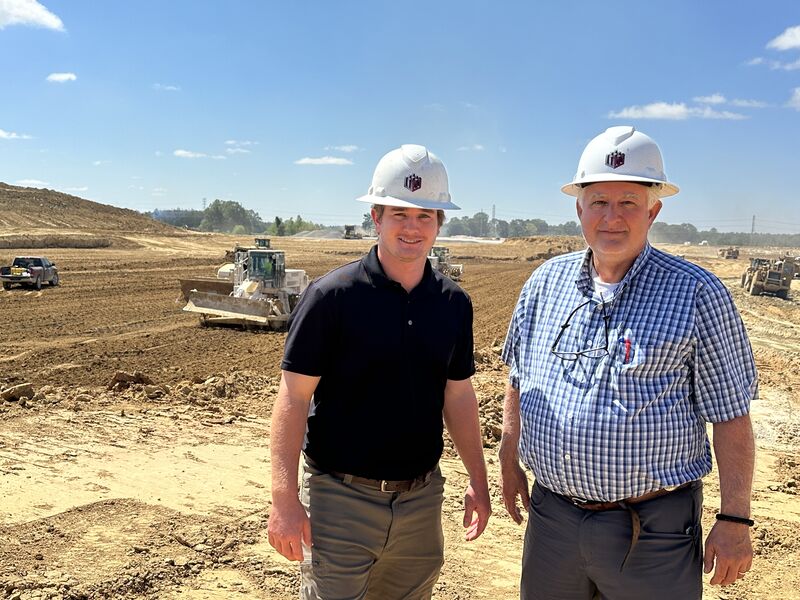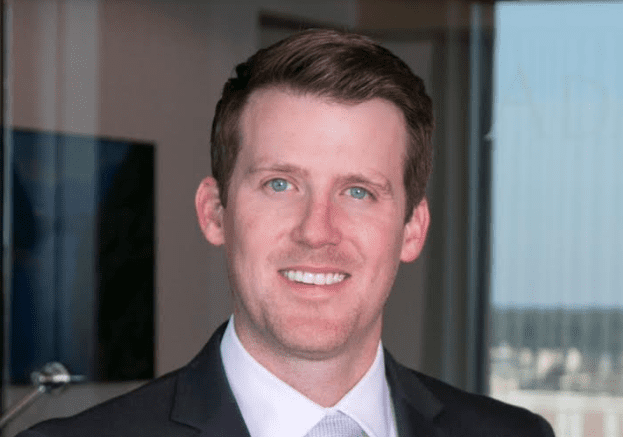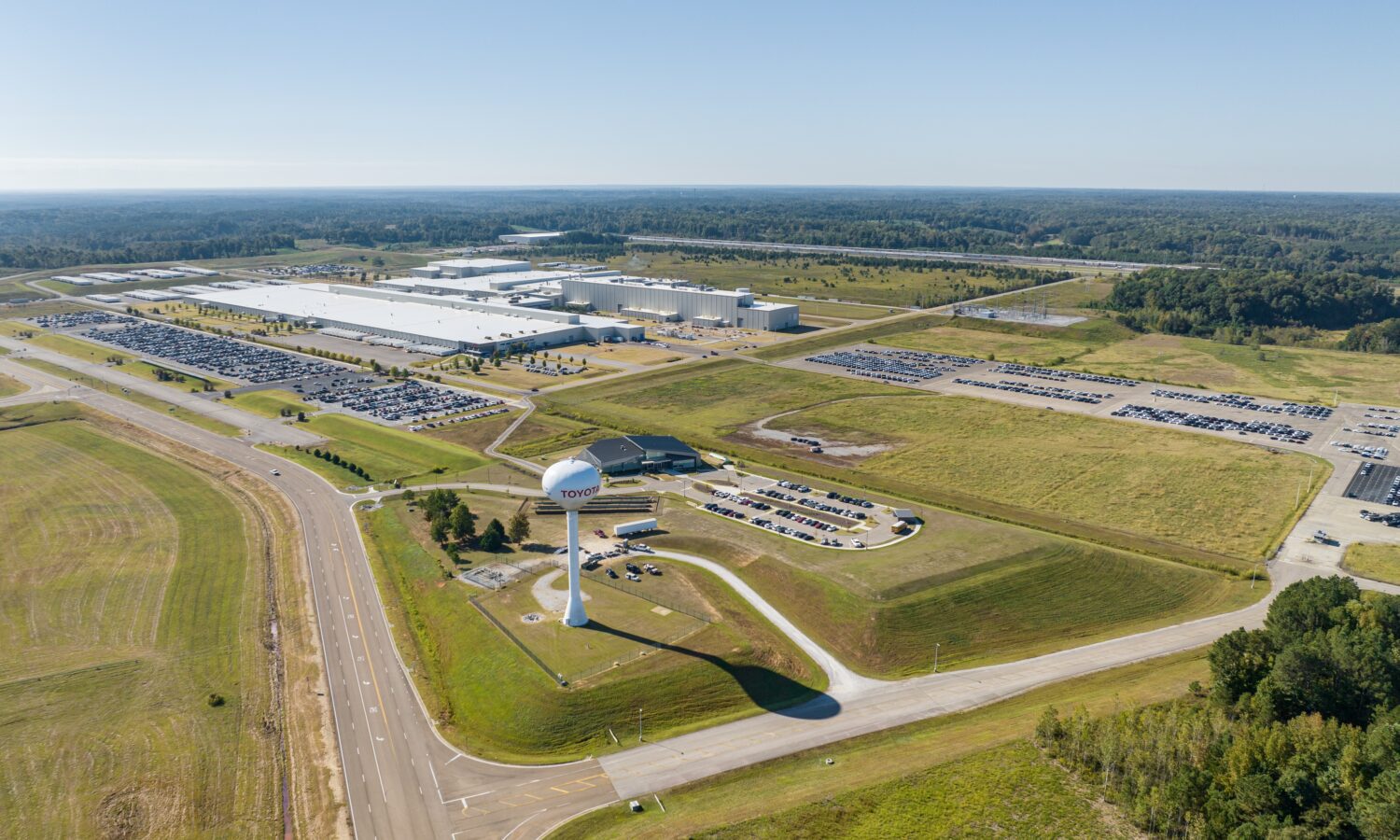
- This is the fourth part of an in-depth analysis of the construction industry in Mississippi focusing on workforce development endeavors to meet increased construction labor needs.
When Bill Cork drives through the parking lots of Mississippi’s immense construction projects, he sees more out-of-state license plates than Mississippi license plates.
“These projects will be built,” said Cork, executive director of the Mississippi Development Authority. “The question is: Why aren’t we building them? We need many more Mississippians developing the skills to meet the demand of our growing economy, and we welcome all those looking to enter this market for the first time, or those looking to make a change in career, to consider these highly paid and sustainable careers.”
For one project alone, the number of construction workers needed on the Amazon Web Services’ (AWS) data center campuses in Madison County will swell from several hundred to 4,000 or 5,000 in the next few months. Governor Tate Reeves indicated that number may grow beyond 6,000. The regional draw market (45-minute drive time) is 592,294.
“I’m happy to say our state and AWS leaders did a great job of planning in advance,” said Brent Bean, president of the Mississippi Construction Education Foundation (MCEF). “Our foundation, along with other workforce development leaders from AccelerateMS, community colleges, and high schools from the central Mississippi area, have been meeting and working with AWS for months to ensure we’d have the workforce needed to handle the construction of the AWS data centers… upon their completion and opening.”
MCEF, which administers the Build Mississippi apprenticeship programs, reported record enrollment this fall: 190 apprentices in Jackson, up from 157 last year, with 71 apprentices in Gulfport, up from 60 last year.
“We’re very pleased with the increase,” said Bean. Next enrollment is August 2025.
For the construction industry, it’s an exceptionally good sign of one small way workforce development providers are keeping the pipeline of skilled workers pumping.
“They’ve had record enrollment… and are examining new models and programs to address the demand,” said Courtney Taylor, executive director of AccelerateMS.
Taylor said the need for thousands of skilled workers in fields – electricians, plumbers, equipment operators, construction supervisors, engineers, and many others – is expected to persist into the next decade.
“To ensure Mississippians can access these quality jobs, the workforce development system must respond to the waves of need by upskilling the local workforce in accelerated pathways,” she said. “This means deeper partnerships must be forged between community colleges and universities, adult education providers, local workforce development areas, high schools, private training providers, and supportive service providers like local non-profits.”
Lloyd Munn, executive director of Associated General Contractors (AGC) of Mississippi, said larger projects like Amazon and others coming into the state “have gotten the attention of our legislature to prioritize training” for the construction industry.
“Our universities have recognized this with construction technology type degrees,” said Munn. “Our junior colleges have stepped up with the skills training better than it’s ever been.”
AccelerateMS created a priority occupations list to ensure funding for critical need areas is prioritized by its office and partners where possible, said Taylor.
“Many of the occupations prioritized fall into the construction sector based on the demand we were able to forecast,” she said. “Additionally, AccelerateMS created a program named Reconnect to provide funding for eligible short-term training programs to encourage the system to diligently attract new workers to the field and to tailor programs to meet the needs of today, not those from bygone eras.”
Munn pointed out that the state “has all sorts of programs that we literally didn’t have 10 years ago.”
“While it’s great to have skills training for a particular trade, it’s important to recognize the need for employees with versatile skills,” he said. “Thirty, 40 years ago, if you were a carpenter, that’s all you did. Companies must do more with less. In today’s business, employees of construction companies wear many hats. That said, there’s still lots of artisan contractors and subcontractors that just do concrete finishing or rebar tying.”
Existing workers must be upskilled to make room for entry-level workers, said Taylor.
“This takes significant investments by industries, the state, local training providers, and non-profits to mobilize and support individuals willing to tackle this work and engage with the construction sector for work,” she said. “However, training thousands of workers across the state is a daunting task when facilities are stretched to their limits, and popular culture shuns construction due to a lack of understanding of today’s jobs.”
New partnerships and funding models must be explored to leverage available resources, provide new resources dedicated to this need, and ensure the output of skilled workers meets the current and expected demand, Taylor added.
“Training facilities in these communities should be operating around the clock to support the massive training operations needed to ensure Mississippians have access to these jobs,” she said. “Educators and parents must begin examining these jobs through new lenses and understanding that the careers available today can feed generations of families.”
Mississippi has a few successful models that come to mind, said Taylor.
“The FORGE group out of the Golden Triangle hosts events like the ‘FORGE your Career Expo’ for eighth graders, and the community event, ‘Little Hands, Big Trucks,’ to increase awareness of the construction industry occupations,” said Taylor. (The FORGE Foundation represents a group of employers focused on building the workforce pipeline, initiated by the Golden Triangle LINK.)
“These are great, but as a state, more must be done, and I won’t sugarcoat that,” said Taylor. “We need high schools, community colleges, and universities to examine their programs and outputs and take steps to align with the demands of the industry. We need industry members at the table any time it’s set to ensure the system is producing what’s needed, not what it thinks is needed. We need funders to incentivize this, and provide targeted funding to close gaps where they exist. We need everyone examining opportunities to re-prioritize based on the world we live in, not the one we want to live in.”
At some level, Taylor believes Mississippi must move beyond the aspirations of individuals and towards the realities of what’s available today.
“If we can provide solid pathways to quality jobs that allow our citizens to win in the short-term, we can continue to adjust the workforce system to accommodate these same workers when they’re ready to advance to a new job or even transition to a new industry,” she added. “Flexibility in operations and a focus on the individual worker/trainee must be key in our approach. It’s a heavy lift, and we’re moving forward. We just need to do a lot more, a lot faster, to truly accommodate demand.”
Lee Nations, president and CEO of Associated Builders and Contractors (ABC) of Mississippi, sees the tide turning on the skilled trades shortage.
“While we’re in no way where we need to be, the prior mindsets of working in the trades are changing for the positive,” he said. “I certainly see a day coming when people truly grasp the life-changing career opportunities within the construction industry, and we have a full pipeline.”
#####











